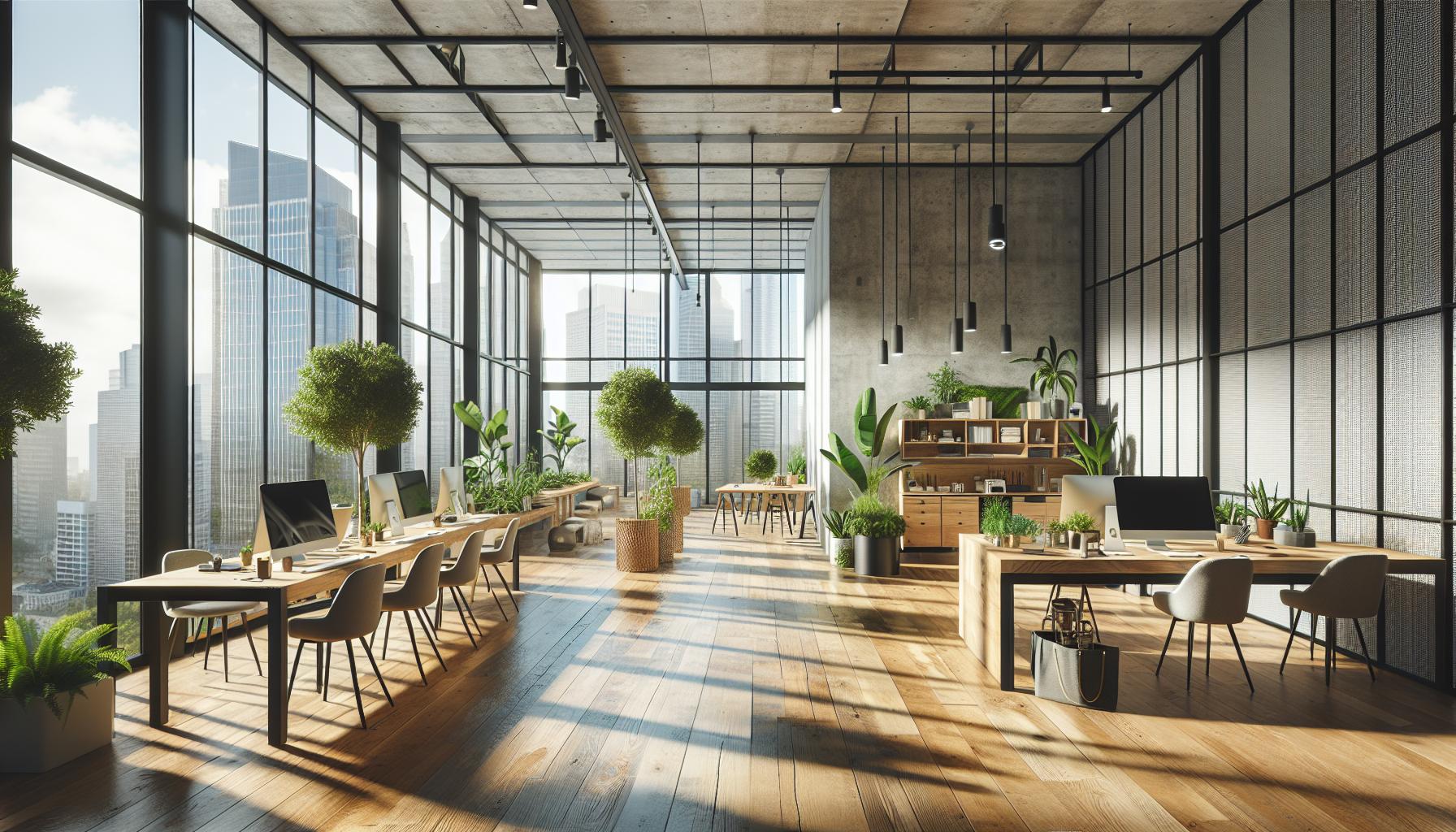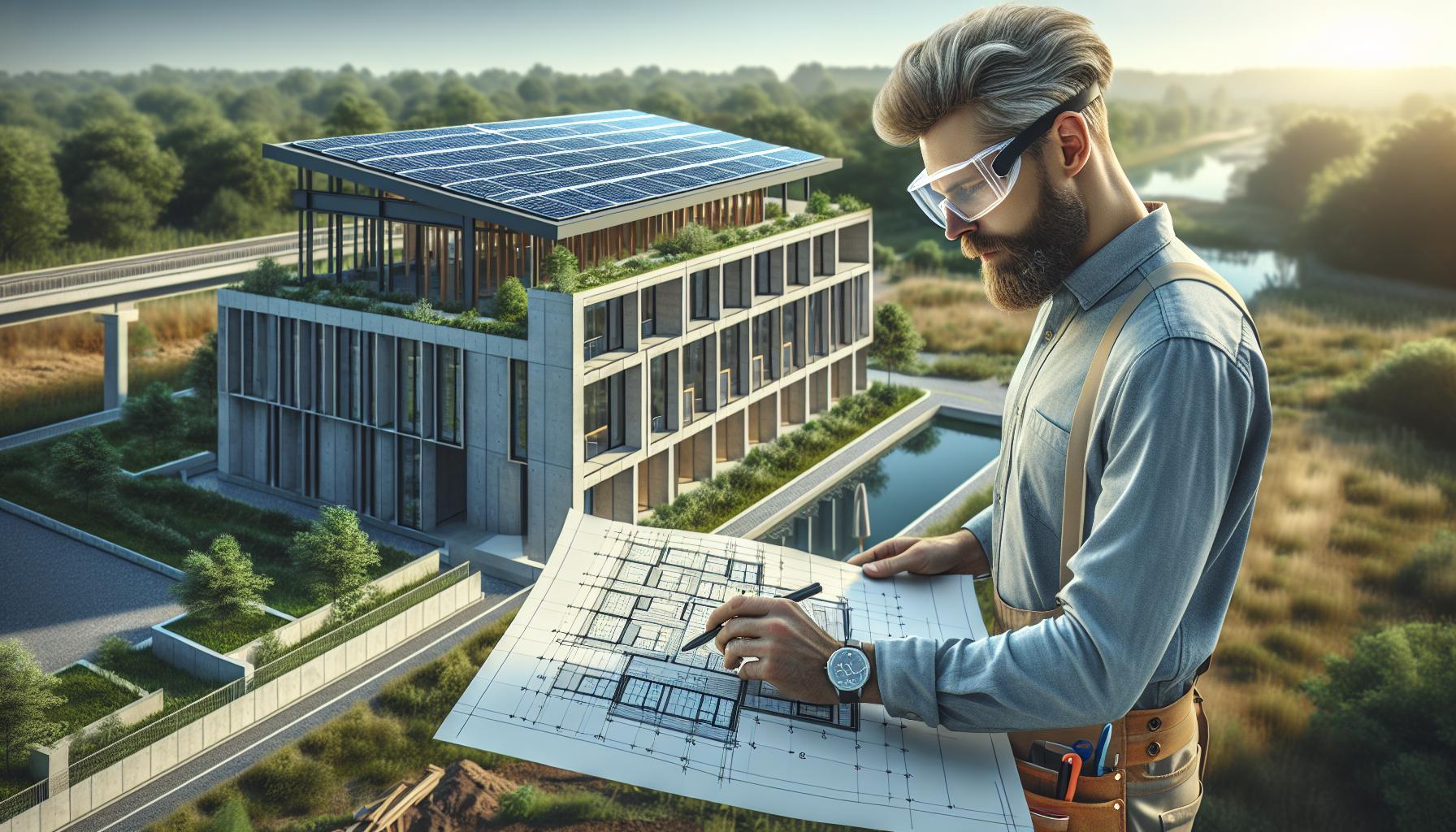In a world where buildings seem to sprout like weeds, some architects are taking a stand—one eco-friendly brick at a time. Sustainable architecture isn’t just a trend; it’s a revolution that’s reshaping skylines and saving the planet. Imagine structures that don’t just sit pretty but actually give back to the environment. Sounds like a superhero movie, right? Well, it’s happening right now.
From green roofs that double as urban gardens to innovative materials that would make Mother Nature proud, these architectural marvels are not just about aesthetics. They’re about creating spaces that harmonize with nature while reducing energy consumption. Join the journey as we explore projects that put sustainability at the heart of their design, proving that eco-friendly can be chic and functional. Who knew saving the planet could look this good?
Which Architectural Projects Have The Concept of Sustainability as a Core Principle of Their Design?
Sustainable architectural projects exemplify harmony between functionality and environmental responsibility. These structures incorporate eco-friendly practices, demonstrating how architecture can support both people and the planet.
Project One: Overview and Principles
The Bullitt Center in Seattle represents a pioneering endeavor in sustainable design. It features a net-zero energy approach, utilizing solar panels for energy independence. Rainwater harvesting and composting toilets exemplify its commitment to resource efficiency. Designed to meet the Living Building Challenge, it emphasizes transparency through the use of reclaimed materials. Fostering a connection between occupants and nature, this project promotes a sustainable lifestyle.
Project Two: Innovations and Impacts
The Bosco Verticale, or Vertical Forest, in Milan showcases urban sustainability through vertical gardens. Consisting of two residential towers, it incorporates over 9,000 trees and numerous plants. The project improves air quality and biodiversity while reducing heat island effects in the city. Innovations in irrigation systems ensure plant health using minimal water, highlighting efficiency. This design has sparked global interest, influencing other cities to adopt similar green initiatives.
Project Three: Community Engagement
The East End Community Center in Houston emphasizes community involvement in sustainable practices. Community members collaborated on the design process, ensuring the center reflects local needs. Energy-efficient features, like natural ventilation and renewable energy sources, reduce operational costs. The facility also serves as a hub for educational programs focused on sustainability. This inclusive approach fosters a sense of ownership and encourages ongoing commitment to eco-friendly practices within the neighborhood.
Key Sustainable Design Principles

Sustainable design principles empower architects to create spaces that contribute to environmental preservation while enhancing user experience. These principles focus on energy efficiency and the use of renewable materials.
Energy Efficiency
Energy efficiency stands as a fundamental component in sustainable architecture. Implementing strategies like passive solar design maximizes natural light and heat. Buildings equipped with high-performance insulation considerably reduce energy consumption. Energy-efficient appliances, such as LED lighting and ENERGY STAR-rated products, contribute to lower operational costs. Incorporating smart building technologies facilitates real-time monitoring of energy usage, optimizing performance. Sustainable projects often feature effective heating and cooling systems that minimize waste. These design elements effectively lower carbon footprints while promoting comfortable living environments.
Use of Renewable Materials
The use of renewable materials significantly impacts sustainability in architecture. Reclaimed wood from old structures not only adds character but also reduces demand for new resources. Bamboo serves as an excellent alternative due to its rapid growth and regenerability. Utilizing recycled metal and glass minimizes waste and conserves energy during production. Natural materials, like cork and straw, are increasingly favored for their low environmental impact and accessibility. Architects often prioritize sourcing locally to decrease transportation emissions, reinforcing community ties. These choices foster a circular economy, enhancing the sustainability of architectural projects.
Future of Sustainable Architecture

Sustainable architecture is steadily evolving as designers integrate eco-friendly practices into their projects. Innovations continue to emerge, shaping the future landscape of architecture.
Emerging Trends
Smart technologies enhance sustainability in new buildings. Automated systems for lighting and temperature control contribute to energy efficiency. Moreover, biophilic design principles promote connections between people and nature, leading to improved well-being. Green building certifications, like LEED and BREEAM, are becoming standard requirements, guiding architects toward sustainable choices. Increasingly, modular construction techniques reduce material waste and construction time, allowing for quicker and more efficient building processes. Lastly, designers are exploring renewable energy sources like solar panels and wind turbines, incorporating them into building designs to generate clean energy and reduce reliance on fossil fuels.
Challenges and Opportunities
Sustainable architecture faces several challenges. Initial costs for green materials and technologies often deter some clients. However, long-term savings from reduced energy bills and lowered maintenance costs counterbalance these concerns. Regulatory hurdles can impede the adoption of innovative designs, yet progressive legislation is paving the way for more sustainable practices. Competition within the architectural industry fosters innovation in sustainable practices, creating opportunities for firms specializing in eco-friendly designs. Educating clients about the benefits of sustainable architecture enhances acceptance, making it easier to implement these strategies. As awareness of climate change rises, demand for sustainable projects continues to grow, presenting architects with valuable prospects in the market.
Sustainable architecture is redefining the built environment by merging aesthetics with environmental stewardship. Projects like the Bullitt Center and Bosco Verticale illustrate how innovative design can enhance urban living while prioritizing ecological health. As architects navigate challenges and embrace new technologies, the focus on sustainability will only intensify.
The shift towards eco-friendly practices not only benefits the planet but also enriches communities. By fostering awareness and education around sustainable design, architects can inspire a broader acceptance of these principles. The future of architecture lies in its ability to create spaces that are both functional and harmonious with nature, paving the way for a more sustainable world.



